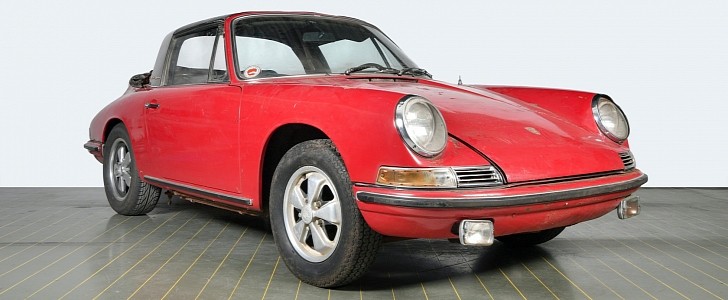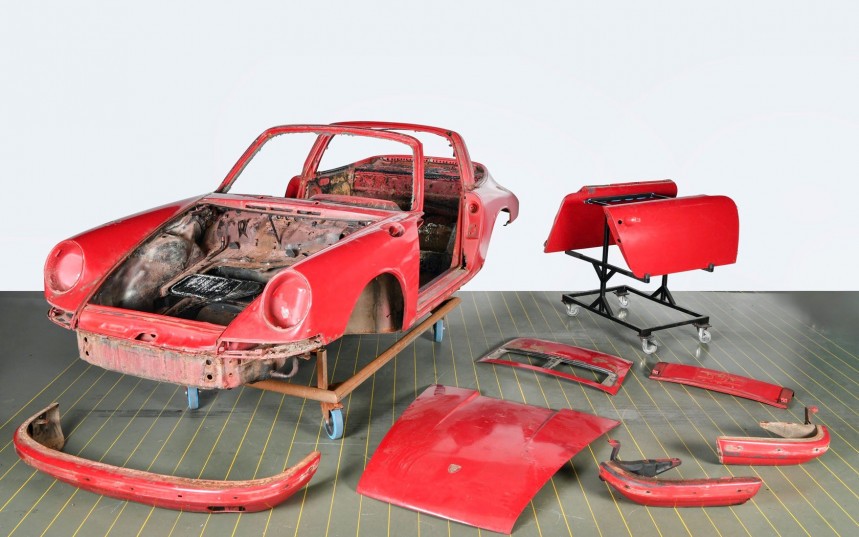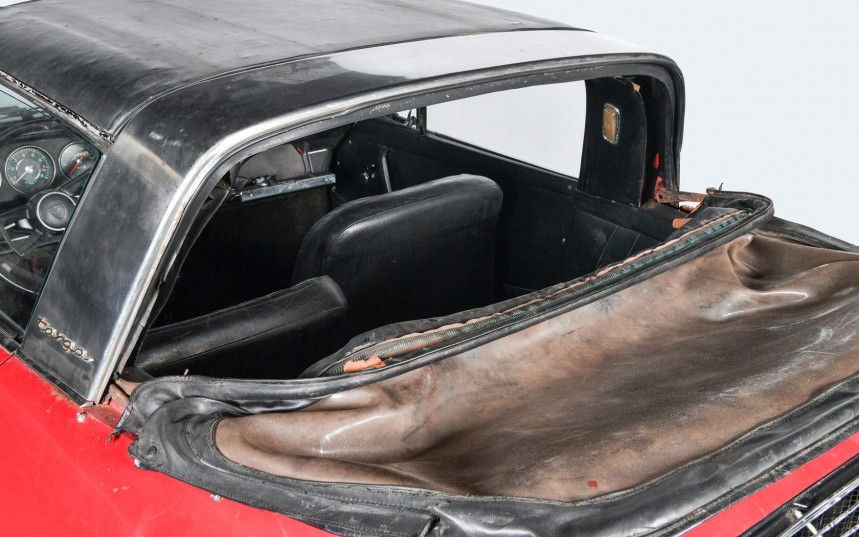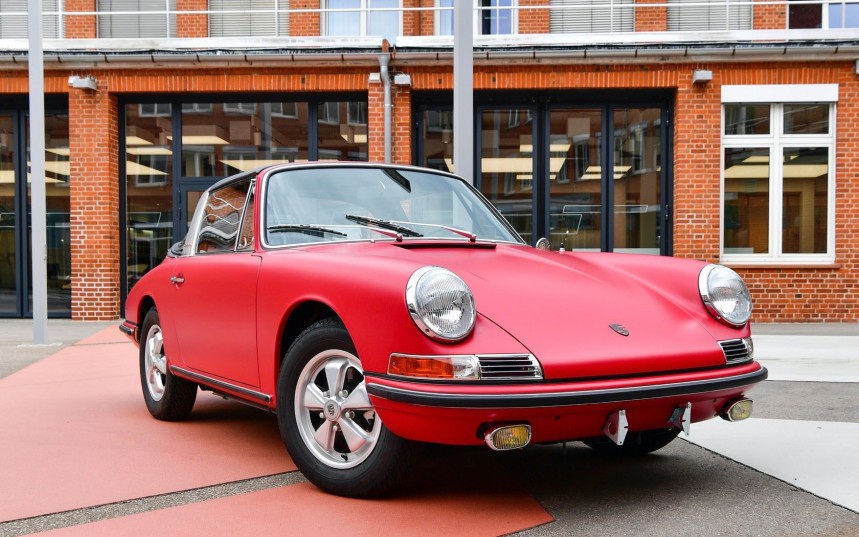After more than forty years of neglect, this classic 911 was transformed into a flawless collector’s item thanks to a comprehensive factory restoration that took more than three years to complete.
Introduced back in 1965, among growing concerns that Cabrio cars were far too dangerous, the iconic 911 Targa featured a fixed roll bar and a removable roof, making it the world’s first "safety cabriolet." It was a resounding success, with many of them being purchased by North American enthusiasts.
One of those early models was discovered by a long-time Porsche collector in Long Beach, NY, rusting away in a doorless garage, covered by a plastic tarpaulin. It had been sitting there since 1977 because its previous owner seemingly forgot about the car.
After comprehensively inspecting the roughed-up Targa, the collector bought it and decided to send it back to Germany for a complete makeover, at Porsche’s Classic Factory Restoration department.
Although it wasn’t in the best of shapes, this 1967 911 S Targa was not missing any parts. This was particularly pleasing since it was originally built with optional features such as leather seats, tinted windscreen, a Webasto auxiliary heater, Blaupunkt Koln radio, or halogen fog lamps.
For the engineers that bring these pieces of automotive history back to life, using aftermarket parts for this process is out of the question. Because of this, finding authentic small components for the 2.0-liter S engine was not an easy task, even with more than 60,000 different genuine spare parts at hand.
The car was completely dismantled, and everything from body panels to the tiniest bolts and screws was either replaced or, if possible, repaired.
The engine and gearbox were also completely disassembled, cleaned, inspected, and restored, then recalibrated and tested according to the original factory specifications.
Since the car was an early Targa version that featured a soft, folding rear window instead of the glass versions that were introduced on newer models, restoring it along with the removable roof cover was another difficult task.
The owner demanded that every inch of the car got restored to its original state, so using modern-day materials was not an option since they feature a different grain and look more robust than the original.
For this reason, the restoration experts had to source the original material used in the late ‘60s and rebuild the elements using fifty-year-old technical drawings and manufacturing methods.
This was a first for the department but created a precedent. Now, the original materials and manufacturing know-how are readily available for the next classic soft-window Targa restoration.
The client had a similar request for the coating used for the chassis parts, engine panels, and air cleaner system. Instead of using the particularly tough powder coating normally used on modern cars, he requested the use of the original two-component black paint.
After around 1,000 hours of work to restore the body, the original Polo Red paint was applied by hand. Because the owner does not just collect cars but actually drives them, he requested the addition of a paint protection film with a slight matting effect. It was applied without the use of adhesives, which means it can be removed without any residue, even after many years.
From the moment it was delivered to Germany, it took more than three years for the iconic 911 S Targa to be fully restored. It was the first such model for Porsche’s Classic Factory Restoration department and one of the most difficult projects they worked on.
The result is a flawless piece of automotive history in its original form. With Porsche’s restoration program, many forgotten classics have a chance to be brought back to life and proudly roam the roads again.
One of those early models was discovered by a long-time Porsche collector in Long Beach, NY, rusting away in a doorless garage, covered by a plastic tarpaulin. It had been sitting there since 1977 because its previous owner seemingly forgot about the car.
After comprehensively inspecting the roughed-up Targa, the collector bought it and decided to send it back to Germany for a complete makeover, at Porsche’s Classic Factory Restoration department.
For the engineers that bring these pieces of automotive history back to life, using aftermarket parts for this process is out of the question. Because of this, finding authentic small components for the 2.0-liter S engine was not an easy task, even with more than 60,000 different genuine spare parts at hand.
The car was completely dismantled, and everything from body panels to the tiniest bolts and screws was either replaced or, if possible, repaired.
Since the car was an early Targa version that featured a soft, folding rear window instead of the glass versions that were introduced on newer models, restoring it along with the removable roof cover was another difficult task.
The owner demanded that every inch of the car got restored to its original state, so using modern-day materials was not an option since they feature a different grain and look more robust than the original.
This was a first for the department but created a precedent. Now, the original materials and manufacturing know-how are readily available for the next classic soft-window Targa restoration.
The client had a similar request for the coating used for the chassis parts, engine panels, and air cleaner system. Instead of using the particularly tough powder coating normally used on modern cars, he requested the use of the original two-component black paint.
From the moment it was delivered to Germany, it took more than three years for the iconic 911 S Targa to be fully restored. It was the first such model for Porsche’s Classic Factory Restoration department and one of the most difficult projects they worked on.
The result is a flawless piece of automotive history in its original form. With Porsche’s restoration program, many forgotten classics have a chance to be brought back to life and proudly roam the roads again.


















